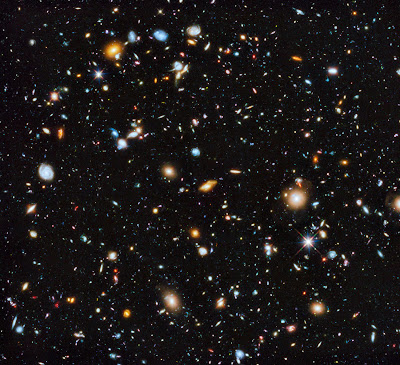 |
| Unraveling the Mystery of Hubble Tension: A Cosmic Conundrum |
In the vast expanse of the cosmos, a perplexing enigma known as the Hubble Tension has captured the attention of scientists from Germany and the U.K. This phenomenon, named after the pioneering astronomer Edwin Hubble, revolves around the discrepancy in measurements of the universe's expansion rate, encapsulated by the Hubble Constant (H0).
Understanding the Hubble Constant
The Hubble Constant, expressed in kilometers per second per megaparsec (km/s/Mpc), signifies the rate at which galaxies drift apart over distances in the Universe. It forms a cornerstone parameter in cosmology, essential for comprehending the dynamics of cosmic expansion.
The Emergence of Discord
The crux of the Hubble Tension lies in the discordance between two distinct methods of measuring H0:
- The Cosmic Microwave Background (CMB) Method: This approach leans on observations of the ancient echo of the Big Bang, the Cosmic Microwave Background radiation, to infer H0.
- The Cosmic Distance Ladder Method: Utilizing various celestial objects like Cepheid variable stars and Type Ia supernovae, this method gauges distances to nearby galaxies, thereby deducing H0.
However, these methodologies have yielded incongruous values for the Hubble Constant, with the CMB method suggesting a lower rate compared to the cosmic distance ladder method.
Implications and Potential Explanations
The ramifications of this tension extend deep into our comprehension of the cosmos. It beckons the possibility of undiscovered phenomena or systematic errors lurking within the fabric of our understanding. Potential explanations include:
- Systematic Errors: Unaccounted-for inaccuracies within measurement techniques could skew results.
- New Physics: The existence of uncharted physical processes or particles, such as dark energy or unconventional neutrinos, may influence cosmic expansion.
- Modified Gravity: Alterations to Einstein's theory of general relativity could reconcile the disparities in measurements.
Current Endeavors and Future Prospects
Resolving the Hubble Tension stands as a paramount objective for cosmologists globally. A myriad of research endeavors aim to refine measurement techniques, pinpoint potential errors, and explore alternative theoretical frameworks. Modern astronomical instruments like the James Webb Space Telescope and the Vera C. Rubin Observatory offer promising avenues for garnering precise data to unravel this cosmic conundrum.
Recent Studies and Ongoing Enigma
Recent studies published in esteemed journals have proposed radical theories and ruled out potential flaws in measurement methodologies, yet the Hubble Tension persists as an unresolved quandary in the realm of cosmology. As the quest for understanding continues, the cosmos guards its secrets with an enigmatic allure, inviting humanity to delve deeper into the mysteries of the universe.
